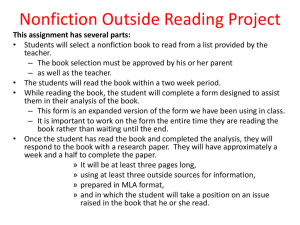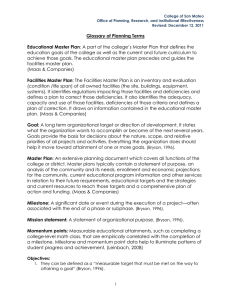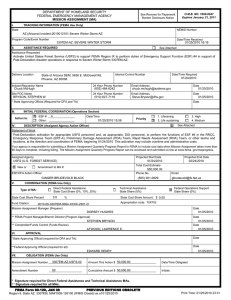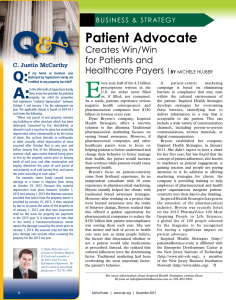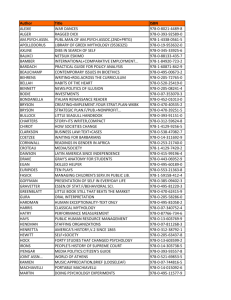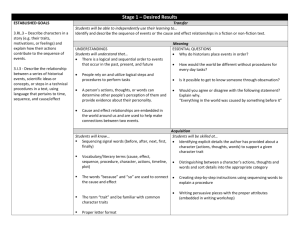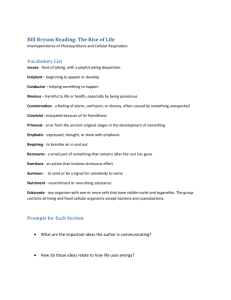LEAD 7000 Case Study Powerpoint
advertisement
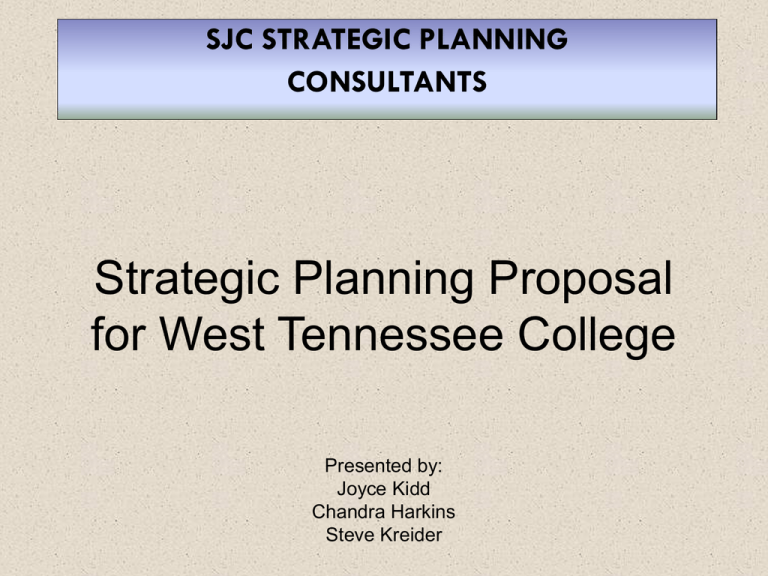
SJC STRATEGIC PLANNING CONSULTANTS Strategic Planning Proposal for West Tennessee College Presented by: Joyce Kidd Chandra Harkins Steve Kreider Strategic Planning • Reason for Strategic Planning • Strategic Planning for Higher Education Bryson’s Strategic Planning Model Source: Bryson (1994) Step 1:Initiate and agree upon a strategic planning process • Selecting Key Decision Makers • Identifying the Policy Making Body • Make Agreements Step 2: Identify organizational mandates • What must you do? • How constrained are you? • What are you really allowed to do? Step 3: Clarifying Organizational Mission and Values • What is the mission? • Does it need revamped? Step 4: Assessing the Organization’s External and Internal Environments • External Environment – Forces/Trends – Key Resource Controllers – Competitors/Collaborators • Internal Environment – Resources – Present Strategy – Performance External Environments Forces/Trends • Political • Economic • Social • Technological • Educational • Physical Key Resource Controllers • Clients • Customers • Payers • Members • Regulators External Environments Competitors • Competitive Forces Collaborators • Collaborative Forces Internal Environments Resources • People • Economic • Information • Competencies Performance • Culture • Indicators • Results • History Present Strategy • Overall • Department • Business process • Functional Step 5: Identifying the Strategic Issues Facing the Organization • Conflict based issues • Define the issue • Can you do something about it? • Suggested Issues Suggested Personnel Issues • VP of Finance is viewed as a tightwad • Conflict between VP of Finance and VP of Academics • VP of Finance does not see the importance of Student Affairs • VP of Student Affairs is still getting acclimated to the organizational culture • Faculty Senate President is subversive and militant • CIO does not have relationship with Academics Suggested Organizational Issues • • • • • • • • • Academic Ranking has declined Lack of Resources for Development Mission needs revamped Need for enhanced fundraising Further IT staff training and development Involvement of the board Lack of funding for athletics Increase of library staff Decreased state budget Step 6: Strategy Formulation • Determine all options • Determine barriers for each option • Select best option Step 7: Strategy and Plan Review and Adoption • Review all strategies • Present strategies to appropriate departments for adoption Step 8: Establishing an Effective Organizational Vision • Description of Organization in the Future • Sets goals for all stakeholders Step 9: Developing an Effective Implementation Process • Implementation roles and responsibilities • Specific objectives and expected results and milestones • Specific action steps and relevant details • Schedules • Resource requirements and sources • A communication process • Review, monitoring, and midcourse correction procedures • Accountability procedures Step 10: Reassessing Strategies and the Strategic Planning Process • Constant Assessment and Evaluation • Monitor Changes and Continue Strategic Planning Process References • Bryson, J.M. (1994). Strategic planning for public and nonprofit organizations: A guide to strengthening and sustaining organizational achievement. San Francisco: Jossey-Bass.
